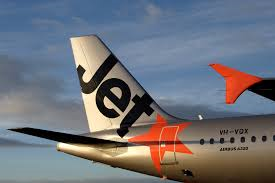An alert Jetstar pilot prevented a potential collision between two jets at Australia’s Melbourne Airport.
A Jetstar Airbus A321 that had just landed from Launceston in Tasmania had to brake heavily to avoid a possible collision with a Qantas Boeing 737-800 taxiing to take off for Brisbane.
The captain of the Jetstar plane saw the Qantas jet approaching the intersection from the left and assesed the pilots had not seen his aircraft and the two jets were headed for a crash.
As a result, he took control of the aircraft from the first officer and braked heavily.
READ: United eco-flight showcases airline responses to climate change
An Australian transport safety Bureau report into the April 2018 incident found that both aircraft had been given by an Airservices Australia air surface movement controller to proceed through the same taxiway intersection.
The report found the controller’s workload had been increased by the high volume of traffic associated with the morning peak. Ongoing taxiway works and the fact he had just taken over from a trainee.
The controller forgot he had issued the Jetstar plane with clearance to taxi through the intersection and instead believed he had instructed it to hold.
The ATSB noted situations of high workload were likely to reduce memory performance and there had been five minutes of almost continuous radio communications and then a 30-second lull before
“During the morning peak period, the surface movement controller, who was conducting on-the-job training with a trainee air traffic controller at the time, was in the process of handing over the position at the end of shift to a relieving controller,’’ it said.
“Additionally, taxiway maintenance work had resulted in some taxiway closures. While the works were not directly related to the clearances issued to the two aircraft involved in this occurrence, they did reduce the efficiency of controlling taxiing aircraft, thereby increasing the controller’s workload.”
The bureau said the investigation highlighted how increased workload and distraction could reduce performance and increase errors.
It said it also underscored the importance of flight crews remaining alert during all phases of light, including taxiing.
“For air traffic controllers, using tools and practices that reduce reliance on memory and delaying handovers until lulls in activity can mitigate these effects,’’ it said.
























